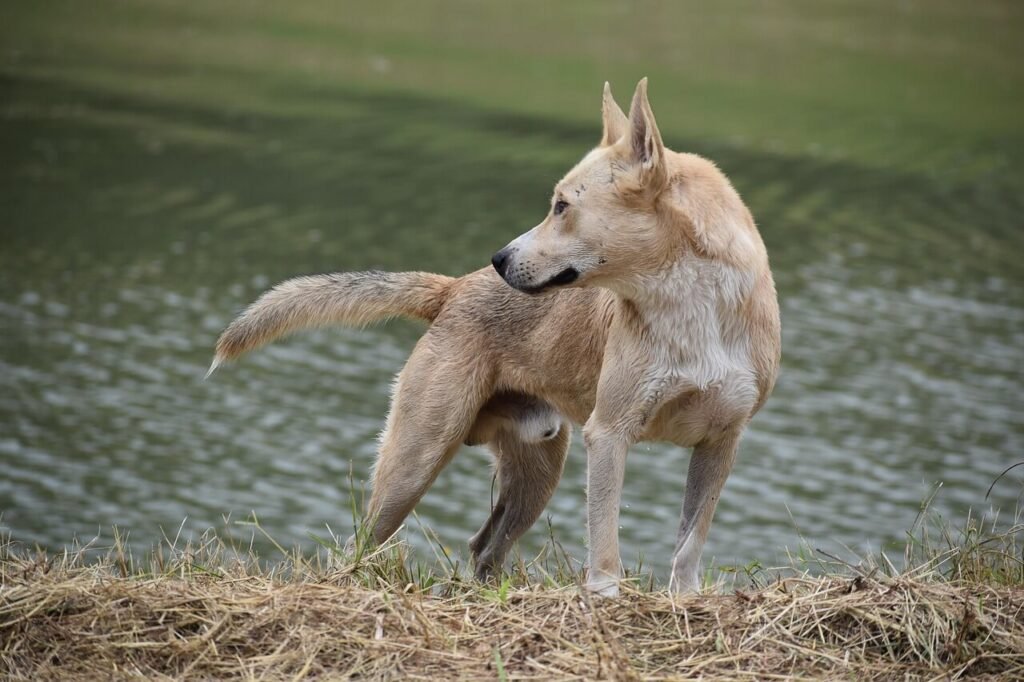The Unsung Heroes: Understanding Military Dog Commands
In the world of military operations, where precision and communication are paramount, dogs have long been indispensable allies. These highly trained canines, often referred to as Military Working Dogs (MWDs), play a critical role in missions ranging from search and rescue to detecting explosives. But what makes these dogs so effective?
The answer lies in their training—specifically, the commands they are taught to follow. Military dog commands are not just simple instructions; they are a refined language that bridges the gap between humans and animals, enabling seamless teamwork in high-stakes environments. In this blog post, we’ll explore the fascinating world of military dog commands, shedding light on their importance, structure, and the incredible bond they foster between handler and canine.
The Foundation of Military Dog Commands
Military dog commands are built on a foundation of clarity, consistency, and adaptability. These principles ensure that dogs can respond quickly and accurately, even in chaotic situations. Below are some key aspects that define the structure of these commands:
Short and Clear Verbal Cues
Military commands are typically one or two words long, making them easy for the dog to recognize and respond to immediately.Consistent Tone and Delivery
Handlers use a firm but calm tone to avoid confusing the dog. Consistency in voice helps reinforce the meaning of each command.Non-Verbal Signals
In noisy or covert environments, hand signals or gestures are used to communicate silently with the dog.Repetition and Reinforcement
Training involves repeated practice and positive reinforcement to ensure the dog associates commands with specific actions.Adaptability to Situations
Commands are designed to be flexible, allowing handlers to adjust them based on the mission’s requirements.
Understanding these foundational elements highlights why military dog commands are so effective. They create a reliable framework for communication, ensuring that both handler and dog can perform at their best under pressure.
Essential Commands Every Military Dog Learns
While the exact commands may vary depending on the dog’s role, there are several universal commands that every military working dog is trained to master. These commands form the backbone of their operational capabilities. Here’s a closer look:
Sit
A basic yet crucial command that teaches the dog to remain stationary and focused on the handler.Stay
This command ensures the dog remains in place until given further instructions, which is vital during reconnaissance missions.Heel
Heeling keeps the dog close to the handler, maintaining control while moving through challenging terrains.Down
The “down” command instructs the dog to lie flat on the ground, often used to keep them out of sight or danger.Search
Used in detection roles, this command directs the dog to sniff out explosives, drugs, or other targets.
These commands are more than just words—they are tools that enable military dogs to execute their duties with precision. Mastery of these basics is essential before advancing to more specialized tasks.
Check this guide 👉4 Best Dog Button Kits for Revolutionary Communication!
Check this guide 👉Dog Commands in Spanish: Best 7 Tips to Train Like a Pro!

Command Type | Purpose |
|---|---|
Verbal Commands | Provide clear instructions in audible form |
Hand Signals | Allow silent communication in stealth ops |
Emergency Recall | Ensures quick return to handler in danger |
Target Identification | Guides dogs to locate specific objects |
Behavioral Corrections | Reinforces discipline and obedience |
Advanced Commands for Specialized Roles
Beyond the basics, military dogs are trained in advanced commands tailored to their specific roles. These commands require extensive training and are designed to maximize the dog’s potential in specialized scenarios. Here’s an overview:
Attack
This command is used sparingly and only in defensive or offensive situations where the dog’s aggression is necessary.Guard
Instructs the dog to protect a specific area or person, deterring intruders or threats.Track
Directs the dog to follow a scent trail, often used in search-and-rescue or manhunts.Retrieve
Teaches the dog to pick up and bring back objects, useful in evidence collection or supply retrieval.Cover
Orders the dog to take cover behind an object, protecting itself and its handler during firefights.
These advanced commands showcase the versatility of military dogs, enabling them to adapt to a wide range of operational needs. Each command is honed through rigorous training to ensure reliability in the field.
Training Techniques for Military Dog Commands
Training a military dog is a meticulous process that requires patience, expertise, and dedication. Handlers employ various techniques to instill discipline and responsiveness in their canine partners. Here’s how it’s done:
Positive Reinforcement
Rewards such as treats, praise, or toys are used to encourage desired behaviors, strengthening the dog’s understanding of commands.Gradual Progression
Training starts with simple tasks and gradually moves to complex scenarios, building the dog’s confidence and skill set.Realistic Simulations
Dogs are exposed to simulated combat environments to prepare them for real-world challenges.Bonding Exercises
Strengthening the bond between handler and dog is crucial for effective teamwork and trust.Continuous Evaluation
Regular assessments ensure the dog maintains peak performance and identifies areas for improvement.
Through these techniques, military dogs become finely tuned instruments of precision and reliability. Their training is a testament to the dedication of both handlers and trainers.
The Role of Military Dogs in Modern Warfare
Military dogs have become indispensable assets in modern warfare, thanks to their versatility and acute senses. Their roles span a variety of critical tasks that enhance the effectiveness of military operations. Below are some key areas where these remarkable animals excel:
Explosive Detection
Military dogs are trained to identify explosive materials with incredible accuracy, often saving lives by preventing potential threats.Patrol and Security
Dogs serve as vigilant sentinels, patrolling perimeters and deterring intruders with their imposing presence and keen instincts.Search and Rescue Operations
In disaster zones or combat scenarios, dogs locate missing personnel faster than human teams, increasing survival chances.Tracking Fugitives
With their superior sense of smell, dogs can track individuals over long distances, aiding manhunts and reconnaissance missions.Combat Support
In active combat zones, dogs assist by scouting ahead, providing early warnings, and even engaging threats when necessary.
The diverse capabilities of military dogs underscore their importance in modern military strategies. Their contributions continue to evolve alongside advancements in training and technology.
Challenges in Training Military Dogs
Training military dogs is a complex process that requires overcoming numerous challenges to ensure they are mission-ready. From physical demands to psychological conditioning, trainers must address multiple factors to prepare these dogs for high-stakes environments.
Building Physical Endurance
Dogs must undergo rigorous physical conditioning to endure long missions in challenging terrains without fatigue.Overcoming Fear Responses
Exposure therapy helps dogs remain calm and focused in stressful situations like loud noises or chaotic environments.Maintaining Focus Amid Distractions
Training includes exercises to teach dogs to ignore distractions such as unfamiliar scents or movements during missions.Adapting to Handler Changes
Since handlers may change due to rotations or injuries, dogs are trained to adapt quickly to new partnerships.Ensuring Consistency Across Commands
Standardizing commands across units ensures seamless communication between handlers and dogs from different teams.
Addressing these challenges is essential for producing reliable military dogs capable of performing under pressure. The dedication required reflects the immense value placed on these canine warriors.
Breeds Commonly Used as Military Dogs
Not all dog breeds are suited for military work; certain characteristics make specific breeds ideal candidates for this demanding role. These traits include intelligence, strength, agility, and trainability. Below are some of the most commonly used breeds in military operations:
German Shepherd
Known for their loyalty, intelligence, and versatility, German Shepherds are a top choice for various military roles.Belgian Malinois
This breed’s high energy, athleticism, and strong work ethic make it perfect for patrol and detection duties.Labrador Retriever
Often used in explosive or drug detection, Labradors combine a friendly temperament with an exceptional sense of smell.Dutch Shepherd
Similar to the Belgian Malinois, Dutch Shepherds are prized for their endurance and ability to learn quickly.Rottweiler
With their powerful build and protective nature, Rottweilers excel in guard and security roles.
Each breed brings unique strengths to the table, making them invaluable assets in specialized military applications. Choosing the right breed depends on the specific needs of the mission at hand.
Frequently Asked Questions About Military Dog Commands
What languages are used for military dog commands?
While English is commonly used, some countries train dogs in their native languages to maintain secrecy.
How long does it take to train a military dog?
Training typically lasts 6 to 12 months, depending on the dog’s role and complexity of tasks.
Can civilian dogs learn military commands?
Yes, many basic commands overlap with those used in civilian obedience training.
Do military dogs understand emotions in commands?
Dogs are highly perceptive to tone and body language, which helps them interpret their handler’s intent.
Are military dogs retired after service?
Yes, most military dogs are adopted by families or former handlers after completing their service.
The Bond Beyond Words: Celebrating Military Dogs and Their Commands
Military dog commands are more than just a series of instructions—they are the lifeline of communication between handler and canine. Through rigorous training and unwavering dedication, these dogs become invaluable assets in safeguarding lives and completing missions. The bond forged through this unique language transcends words, embodying trust, loyalty, and mutual respect. As we reflect on the incredible synergy between humans and their four-legged counterparts, it becomes clear that military dogs are not just tools but true partners in the line of duty. Their contributions remind us of the profound impact that interspecies collaboration can achieve.
Cat Fever Treatment: Best 7 Expert Tips! Discover expert advice on identifying, managing, and treating fever in cats to ensure their quick recovery and well-being.
Understanding Meloxicam for Cats: Best 7 Expert Tips! Learn how to safely administer meloxicam, manage side effects, and ensure your cat's comfort with expert advice on feline pain relief.
Amoxicillin for Cat UTI: Best 7 Expert Tips! Discover safe usage, dosage guidelines, and expert advice on treating feline urinary tract infections effectively with amoxicillin.
Understanding Cat Cancer Treatment: Best 7 Expert Tips! Discover expert advice on managing feline cancer, from early detection to treatment options, ensuring your cat’s health and comfort.





